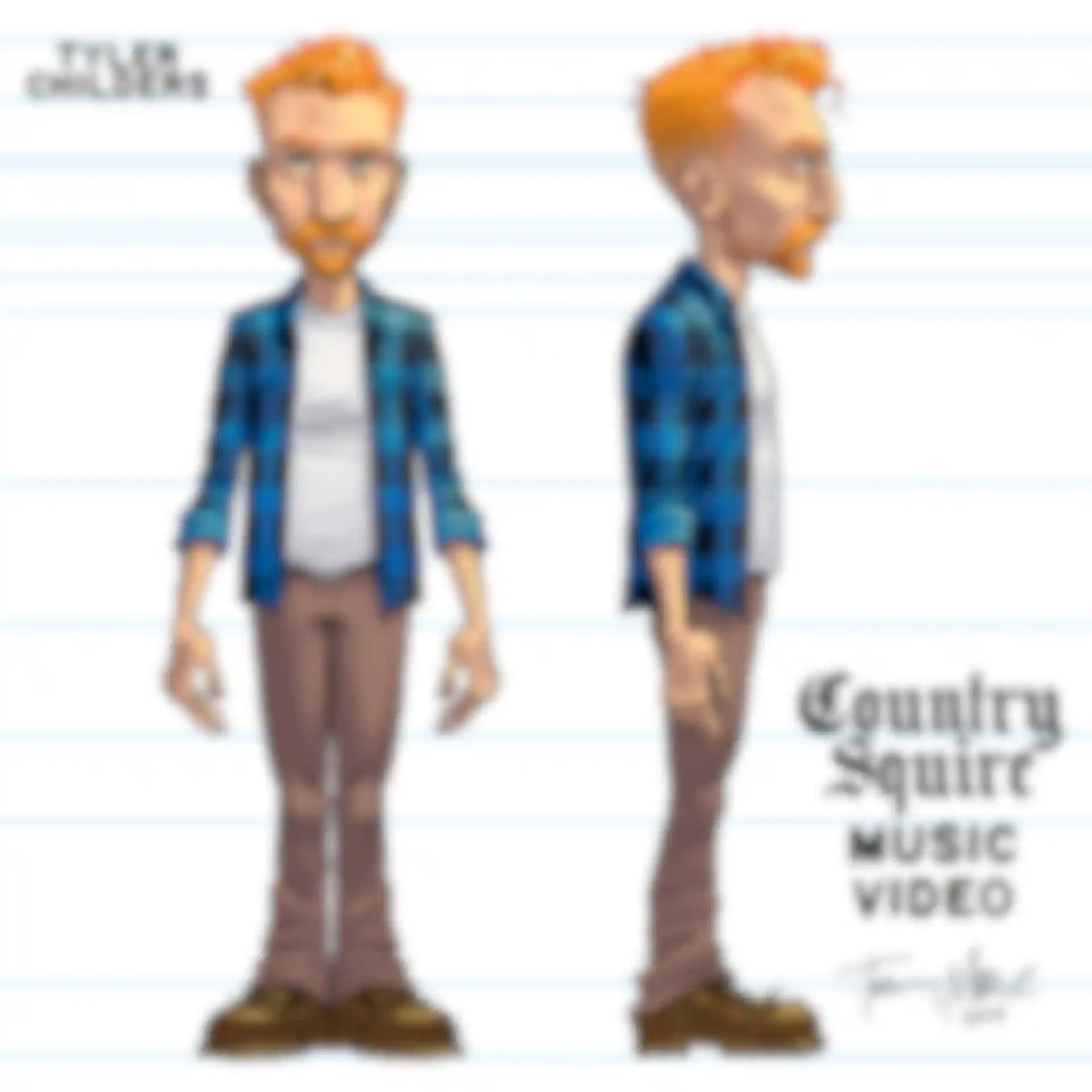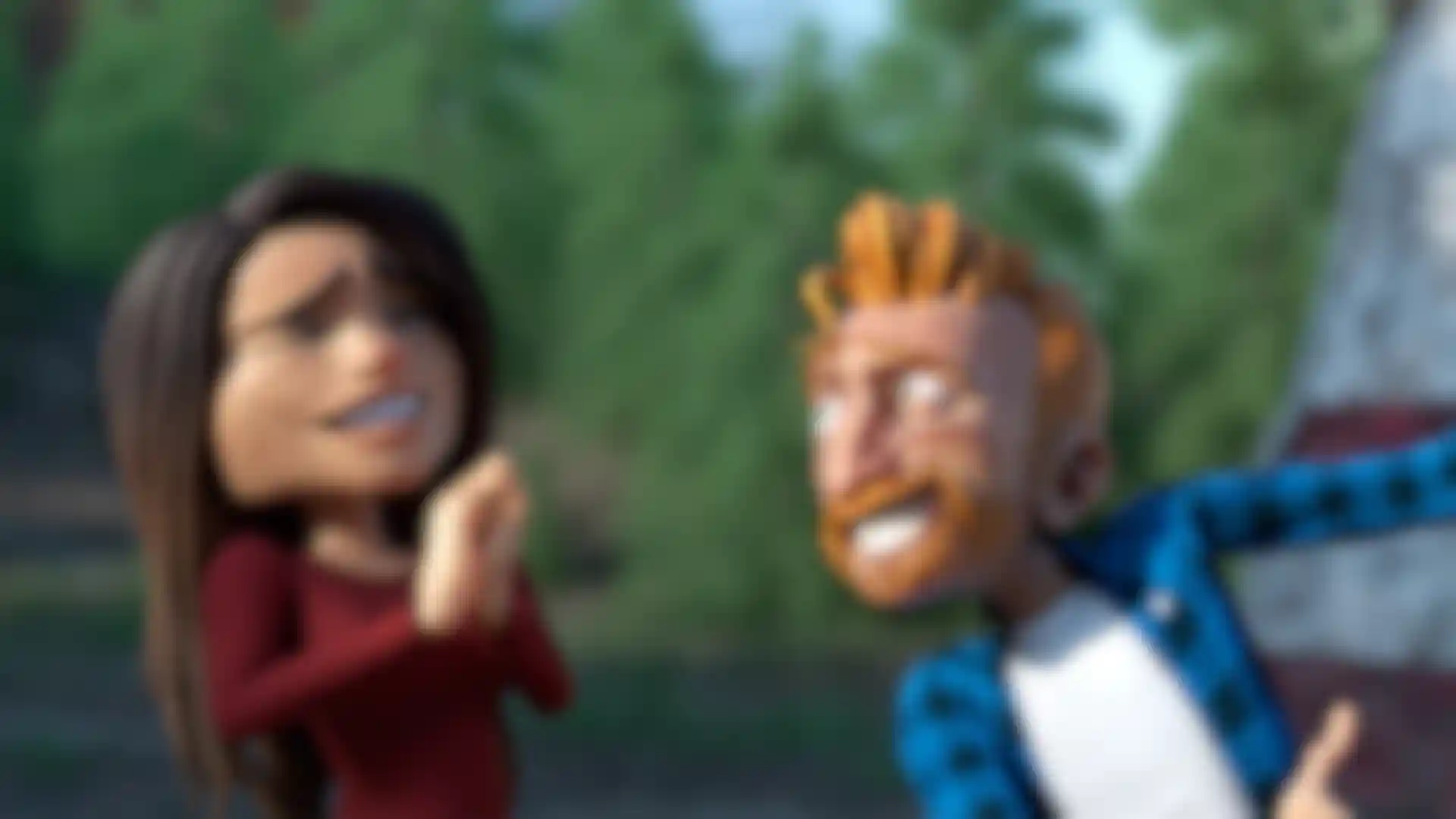
Tyler Childers’ Animated Video, “Country Squire” How Bomper studio used C4D to create a country music love story.
Welsh creative studio, Bomper immersed itself in the American country music scene to create the 3D-animated video for “Country Squire,” the title track of Grammy-nominated singer-songwriter Tyler Childers’ 2019 album.” Directed by Tony Moore, who also designed the album’s cover, the music video features a cartoony cast headed by Childers and his wife, Senora May.
Moore, a comic-book artist known for The Walking Dead, Fear Agent, Punisher and Deadpool, imagined a love story right out of Childers life in which the Kentucky couple gets married, saves up to buy a used camper named “Country Squire,” lives a happy life and retires in outer space.
Using Cinema 4D, After Effects, ZBrush, Houdini and Octane, Bomper spent six months working on the music video, which presented several complex challenges they needed to overcome. “The budget wasn’t massive, but it looked like loads of fun,” recalls Executive Creative Director Emlyn Davies.
They particularly liked that Moore wanted to reference the 1967 stop-motion film Mad Monster Party?, as well as 2009’s Cloudy with a Chance of Meatballs.
“Cloudy is one of our favorite CG films, so that intrigued us,” Davies adds. We also thought the stop-motion idea would help by limiting the frame rate to 12 frames per second, so we would have less rendering to do and, hopefully, less animating.”
Mad Monster Party? ended up being a creative touchstone, too, says Bomper Art Director Josh Hicks. “All of the character designs in that film were done by Jack Davis, who worked for Mad magazine, so when we saw how much Tony’s work vibed with Davis’, we knew the aim of the game was to take Tony’s drawings and translate them as accurately as possible so they would work logistically in 3D space.”
Mimicking Real-Life

Moore began by drawing characters from multiple angles. Bomper’s 3D artists brought the characters into ZBrush for sculpting, and also added some additional texturing of their own. Moore signed off on a final iteration of each character before the rigging began. Fortunately, Moore’s creative sensibility made for easy collaboration. “The great thing was, if he didn’t like something, he would show us why, and that would steer us in the right direction,” Davies says.
Moore’s album cover for Country Squire, which features a clearly agitated Childers, also gave the team ideas about how the singer’s animated character could move. Other characters in the video were based on real people, including Childers’ touring bandmates, which gave the animators specific reference material for their movements.
Bass player Craig Burletic, for example, is notorious for his head-bobbing performance style, an idiosyncrasy that was faithfully replicated on screen. “We didn’t want to use stock, boilerplate movements, and that helped keep the shots with the whole band looking good,” Hicks explains.

The environments, too, were rife with in-jokes and tributes. Portraits of local legends John Prine and Keith Whitley hang on a wall, and stickers on Childers’ guitar case call out country musicians Kelsey Waldon and Sturgill Simpson—along with Moore’s Fear Agent comic book.
Fans might also notice that the license plate number on Childers’ pick-up—BR549—matches the phone number of the used-car dealer played by Junior Samples on the long-running TV show Hee Haw. “Tony wanted to jam details into scenes like Mad magazine did, so the video would be filled with bits of information, gags and callbacks,” Hicks says.

Caerphilly, Wales, may be a long way from Kentucky, but Bomper did its best to pack the video with local flavor. And when the team stayed up late to watch the premiere live on YouTube, they were excited to see viewers recognized and appreciated every Easter egg.
Optimizing Workflow
Bomper’s team considers Cinema 4D to be the studio’s core creative tool, and they had already spent nearly two years getting comfortable with using the 3D software for character animation when this project came along. In addition to creating several short CG projects, Bomper premiered the studio’s first short film, Coffee Run, in 2020. In fact, it was that three-minute film that convinced Moore and Childers’ label, RCA, that Bomper had the chops required to execute Moore’s vision.
The studio’s workflow relied on C4D’s Xrefs feature, which allows assets to be referenced from external files, keeping the scenes they appear in as clean as possible. “There was not one scene with live geometry in it,” Hicks recalls. “We needed the animators to work off of clean, textureless proxies, and then use a final version for rendering.” That strategy allowed the team to easily update textures based on Tony’s feedback without having to redo any animation.
Animatics were cut together early so the team could build After Effects comps in advance, allowing renders to be dropped in as they came out of C4D. “We had 13 or 14 people working at one time, with three or four people making assets constantly, everything from a guitar case to an entire environment,” Hicks explains, adding that they used Ftrack for project management.

While the team used ZBrush to create all of the characters, they relied on Cinema 4D for materials, rigging and animation, as well as modeling hard surfaces, including props and environments. Textures were created with Substance Painter to give surfaces a painted look that meshed with the stop-motion aesthetic, and smoke and fire were made with TurbulenceFD. To get the right look for the exploding snowman scene, the team turned to Houdini with multiple layers of effects using Grain, Cloth and RBD simulations. Watch the snowman sequence here.
Overcoming Challenges
Every project has its challenges, and Bomper’s team agrees that the most challenging shot in this music video was a scene that begins with the camera looking down over Tyler’s shoulder as he plots a tour route on a map. Suddenly, the camera zooms down toward the map where Childers’ blue pickup, with his band members loaded into the back, can be seen careening from pin to pin. “We couldn’t figure out how the camera move was going to happen in a way that wouldn’t be massively jarring,” Hicks says.
There were compositing issues to consider, and Houdini elements, too, when the trucks’ tires skid. After many conversations, Bomper told Tony that there wasn’t enough time to make what he wanted to do happen. And then Claire Hodges, one of the studio’s animators at the time, solved the problem by using Blender to roughly animate a cube and then draw over the top of it with Blender’s grease pencil. “I was like, ‘Wow’,” says Hicks. “I never thought we’d get all of that into a shot that short.”

Working with Moore also gave the team a chance to up their color and lighting game. “I don’t think any other clients have given us as many specific lighting notes,” Hicks says. “We’d light a shot to the best of our abilities, and he’d have a couple of little notes based on color, maybe in just one area of the scene, and we’d do it and it would transform a shot instantly. It was amazing.”
Davies says the Bomper team had “an absolute blast” working with Moore, RCA and Genero, who commissioned the ambitious project. “Colonel Tony Moore’s fantastic, over-the-top artistic sensibility and keen eye for detail really pushed us creatively while maintaining a genuinely collaborative process,” he recalls. I’m extremely proud of the team for all of their hard work on this, especially during a global pandemic. This really was a dream project for us, and we hope everyone enjoys watching “Country Squire” as much as we enjoyed making it.”
Credits:
Director: Colonel Tony Moore
Producers: Nicholas Robespierre and Mark Roemer
Production: Bomper Studio